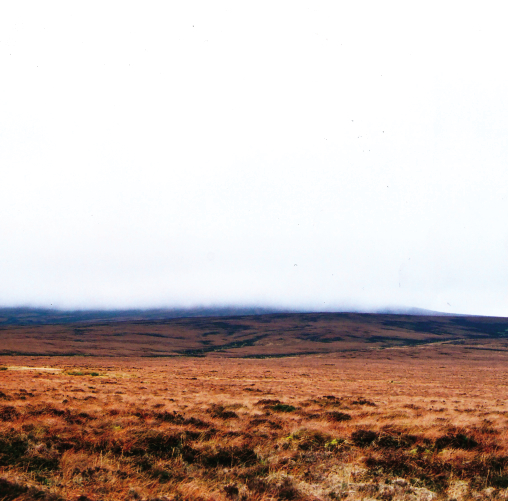The first time I listened to Cat Mask At Huggie Temple I was sitting on a deckchair under the full, five-fingered leaves of a sycamore tree in my parents’ back garden, watching our cat hunt her tiny prey through the grass. It was downright hot and the smell of the yellowing hay in the fields around us blew fresh on a perfect summer breeze. It was a scene more Californian than anyone would have a right to expect from rural Irish bog-land but it was the middle of summer and we were all making the most if it. It was, in short, the perfect time to listen to Cat Mask At Huggie Temple.
When Steve Gunn and John Truscinski released Ocean Parkway last year, their second collaborative album, NPR critic Lars Gotrich described the sound as one that “takes in the expanse of the American open road with the hypnotic thudding groove of rubber hitting cement." The feeling of the endless highway, the great routes of possibility crossing the epic American continent, were somehow central to the music. Gunn’s guitar playing echoed everyone from the Grateful Dead to John Fahey and Sun Ra – basically anyone with a loose and flowing sense for cosmic jamming. Truscinski’s drumming takes in those sounds too but comes from a distinctly jazzier base, all splashy cymbals, well-placed snares and soft, tumbling rolls bridging the gaps between phrases.
With the addition of Irish guitarist Cian Nugent on second guitar, the Gunn-Truscinski Duo becomes Desert Heat. Beyond the name, not a huge amount has changed. Nugent slips into the duos stream with ease, becoming practically indistinguishable from Gunn at certain points. As the title track slows to its low, winding end, the guitars play themselves out through a series of intertwined descending scales. The question of who is playing what never enters the mind. It’s a suitable ending for a track that never quite lifts off in the way you might expect, remaining instead quite restrained through its 12-minute running time. The jam is loose, for sure, but it never seeks to blow its load on some crazy crescendo or storm of noise. The balance between all three instruments is key with no one shooting off alone and half-cocked. Truscinki’s drumming is too subtle, too rolling to drive the music in such a direction, forcing the guitarists to be as detailed and textured as he is.
When ‘Chimay Blues’ came on in my headphones that first time, I was staring straight up into the canopy of leaves above my head. It starts in contemplative mood, just some barely-there guitar slowly joined by the ominous, distant thud of a snare with the snares off and gentle tom work. The leaves were a hundred healthy shades of green and a battered wooden wind-chime hung from the branches, silently waiting for a stronger breeze to shake it into life. The vaguely Eastern sounding modal scales of the guitars grow more complex and begin to merge as Truscinski finds his groove, almost half way through the track. Suddenly, as out of nowhere, there is movement and we are going forward. For the rest of the track the trio stay on that one breeze, backwards and forward through the leaves, the guitars climbing and falling around each other. Truscinksi keeps a straight beat running through the final five minutes, gradually fading it out to nothing again before anyone has time to get tired of it.
It’s hard to know what to call Cat Mask At Huggie Temple, because it isn’t an album. It’s a two-track 12", a format more familiar for club bangers than exploratory guitar jammers. Its economy is a strong-point though. At 25 minutes, you don’t feel at all exhausted and there’s a sense the players aren’t either. It’s just two ideas pitched up on the spot, stretched out and viewed from every angle. While the Gunn-Truscinski Duo have enough experience playing together to be able to maintain their focus over a full-length, the addition of Nugent means there’s a new personality in the mix and, as such, things haven’t quite gelled fully yet. Cat Mask sounds like its origins, a tour record; thrilling, ephemeral and fleeting. It delivers an exciting ride but, importantly, it suggests there’s much more to come.


